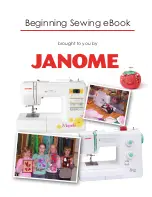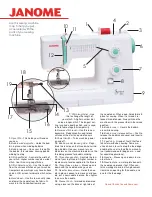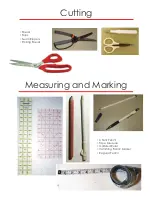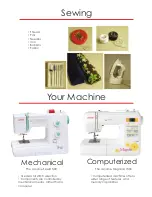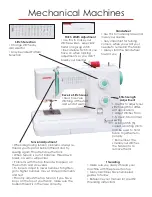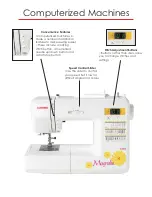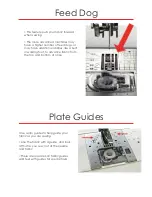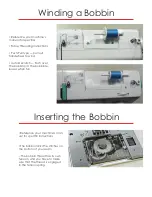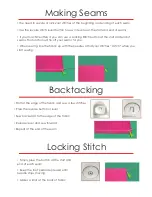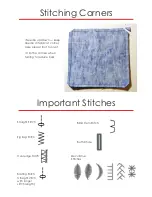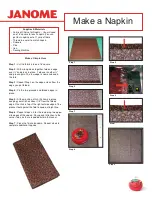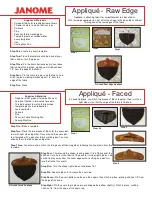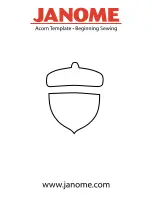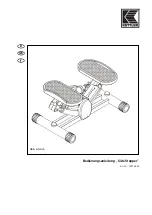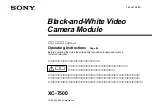
Making Seams
•You need to secure or lock your stitches at the beginning and ending of each seam
•Use the reverse stitch lever/button to sew in reverse at the start and end of seams
• If your machine offers it, you can use a Locking Stitch button at the start and end of
seams. This function will tie off your seams for you.
• When sewing, line the fabric up with the needle so that your stitches “catch” when you
start sewing.
Backtacking
•Start at the edge of the fabric and sew a few stitches
• Press the reverse button or lever
• Sew backward to the edge of the fabric
• Release lever and sew forward
•Repeat at the end of the seam
Locking Stitch
• Simply press the button at the start and
end of each seam
• Keep the foot pedal depressed until
needle stops moving
• Makes a knot at the back of fabric
Summary of Contents for Sewist 500
Page 1: ...Beginning Sewing eBook brought to you by ...
Page 13: ......

